Reverse logistics is becoming an integral part of operations for manufacturers, distributors and service providers to minimize lost revenue when moving products, parts and sub-components back into inventory. Recent Statista research shows that goods returns cost $246.3bn per year in North America and must span customers, service organizations, supply chains, receiving departments and even a Read more
Industry Blogs

Reverse logistics is becoming an integral part of operations for manufacturers, distributors and service providers to minimize lost revenue when moving products, parts and sub-components back into inventory. Recent Statista research shows that goods returns cost $246.3bn per year in North America and must span customers, service organizations, supply chains, receiving departments and even a repair depot operations or subcontractors. In order to minimize lost revenue, organizations need to assess their approach to reverse logistics.
Here, I outline three common reverse logistics scenarios. If these ring true then it may be time to evaluate whether your reverse logistics strategy is costing you time, money and customer satisfaction.
- Do you deploy technicians and support assets in the field?
The field service process alone includes multiple reverse logistics steps. The technician pulls a component out of a repairable piece of equipment at the customer site and replaces it with a part out of his truck inventory. In a situation where the technician does not have a spare part and cannot, an inventory order will need to be placed. The field technician will need complete visibility of whether the part is under warranty or if the customer is entitled to special pricing as a result of a contractual commitment.
 Without an integrated end to end service platform, you would be relying on a technician to communicate with separate field service, reverse logistics, warranty management, contracts and installed base systems to get the answers he or she needs.
Without an integrated end to end service platform, you would be relying on a technician to communicate with separate field service, reverse logistics, warranty management, contracts and installed base systems to get the answers he or she needs.
Obviously, some type of communication between field service and reverse logistics software is necessary if only to prevent losing track of parts or components pulled from customer equipment in the field. But in these situations, there needs to be a seamless way to track whether or not the part is going to be repaired, who owns the item as it enters the reverse logistics process, whether the part, or repair, is billable, and then the part must be tied with a return materials authorization (RMA) through the original field service order.
Regardless of whether an environment is focused entirely on reverse logistics or in the field, companies expect their software platform to handle knowledge transfer. A technician in the field should be able to access tutorials on various repair processes, which in turn makes those with less experience more productive while increasing first time fix rate. Reverse logistics software can now embed in the workflow detailed videos designed to walk a worker on the repair bench in the workflow. The result – increased productivity and putting knowledge into the hands of technicians where and when they need it.
- Do you rely on an intricate supply chain?
In most organizations, the reverse logistics process can be delineated by new product and after use returns. In an after-use environment, the reverse logistics process involves multiple stakeholders, and this means that a software product used to manage this value chain must encompass all, not some, of these stakeholders. Here’s why.
The customer service department generally authorizes the service and repair work through the call center, or increasingly, digital customer portals, chatbots or even social media.
If a replacement part is due for shipment, the customer service representative will check inventory availability, and may have to contact purchasing. If the product replacement requires a build order, the customer service representative may have to involve manufacturing or supply chain departments. If the defect is to be received for repair, logistics will be engaged to receive the defect and route it for repair. Each of the stakeholders has a role to play, and each has their specific process to follow. This gets even more complicated when there is a field service component to the reverse logistics process.
Throughout this process, there is a set of rules that must be followed. These rules cover everything from the asset or product itself, which parts are sent to which repair facility or depot, whether the part is covered by warranty or contract entitlement, whether a customer has a replacement for the part in inventory or whether you need to ship one and much more. Clear communication, beginning with the task of defining processes and ensuring that the correct business process is followed, maybe with configured workflow, is very difficult without some enterprise reverse logistics and repair software. Check yours out.
- Are you outsourcing elements of your field service operations?
Combining reverse logistics with field service is challenging enough when you are relying on your own employees. But more and more organizations now outsource field service work to subcontractors for specific tasks or in times of peak demand. Subcontractors introduce several new logistical steps into a reverse logistics process. Reverse logistics software needs to account for multiple subcontractor types, and reimbursement policies in order to manage the complex situations caused by sub-contracting.
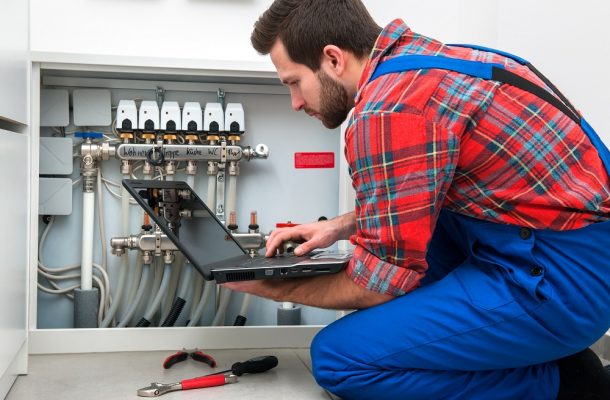 First, in order to delegate tasks to a subcontractor, you need to establish their availability given the time constraints and ensure they have the parts and expertise needed for the job. The contractor must provide a not-to-exceed cost figure, receive a purchase order and perform the work.
First, in order to delegate tasks to a subcontractor, you need to establish their availability given the time constraints and ensure they have the parts and expertise needed for the job. The contractor must provide a not-to-exceed cost figure, receive a purchase order and perform the work.
But what if the subcontractor removes a part from a customer’s equipment for return? This is where things can get very, very complicated. If they replace part A with part B, what happens to part A? The subcontractor may send an invoice and want to get paid for the part they used out of their inventory. Depending on the arrangement you have with the subcontractor, they may get paid for the new part only when you receive the returned original part. Or, if we have a stronger relationship and have built more trust, the subcontractor may be paid once a material return is authorized or when shipping confirmation is received by the contractors. All of this can change by individual subcontractor, customer, product line or by geography.
If the work and part are covered by a warranty, the subcontractor will bill the vendor for the part. But if the part and work is out of warranty and the subcontractor in fact owns the relationship with that customer as an independent service provider, as a reverse logistics organization you may only get back parts if there is a core credit involved.
Looking back to go forward
It’s clear that reverse logistics operations span a complex network of players, parts and, in some case, organizations. If you are encountering these common challenges on a regular basis then it’s time to reassess your approach to reverse logistics as a discipline. The next step is to see how enterprise software can alleviate reverse logistics pain-points – the right solution should help handle large supply networks and reduce costs.
 Tom DeVroy, Senior Product Evangelist, North America IFS
Tom DeVroy, Senior Product Evangelist, North America IFS
Tom DeVroy has over 30 years of experience in high tech service operations including work with hardware, software and consulting firms, as well as premier global service organizations like Ericsson, DHL, Xerox, and Ingenico. He holds a degree in business administration from the University of Wisconsin-Parkside.

While PEX has been used for more than 40 years in radiant heating applications, it’s now getting more traction in commercial hydronic heating and cooling applications as well. Contractors and engineers are beginning to spec and install PEX for distribution piping to various terminal units, such as fan coils, reheat coils, heat pumps, baseboard radiators Read more
 While PEX has been used for more than 40 years in radiant heating applications, it’s now getting more traction in commercial hydronic heating and cooling applications as well. Contractors and engineers are beginning to spec and install PEX for distribution piping to various terminal units, such as fan coils, reheat coils, heat pumps, baseboard radiators and chilled beams.
While PEX has been used for more than 40 years in radiant heating applications, it’s now getting more traction in commercial hydronic heating and cooling applications as well. Contractors and engineers are beginning to spec and install PEX for distribution piping to various terminal units, such as fan coils, reheat coils, heat pumps, baseboard radiators and chilled beams.
However, while PEX is thoroughly tested and proven in the field, it can sometimes be misunderstood. Many wonder if a plastic pipe can really compete with, let alone outperform, metallic piping in these types of applications.
So, to make it easy, I’ve outlined a few important facts you should know before installing PEX in a hydronic distribution piping application.
All PEX is not the same
Professional PEX products fall into three categories: PEX-a, PEX-b and PEX-c. Of those three, PEX-a, manufactured using the Engel Method, has the highest degree of consistent crosslinking — at 80 percent. This produces a pipe that is more flexible and more durable with thermal and elastic memory properties.
Understanding thermal and elastic memory
Thermal memory is the ability to repair accidental kinks in the PEX-a piping with a controlled heating source, such as a heat gun. The controlled heat quickly eliminates the kink in minutes, while the pipe is restored to its original durability.
Elastic memory refers specifically to how PEX-a piping will quickly return to its original dimensions after expansion. This allows the use of the exceptionally strong, ASTM F1960 fitting connection.
In creating a PEX-a connection, the installer uses a specially made expansion tool to enlarge the diameter of the pipe, so that a fitting with a slightly larger internal diameter can be inserted. The pipe quickly compresses over the fitting, creating a durable connection that actually strengthens over time.
Just as important: Because the fitting diameter is a bit larger than the pipe diameter, “dry-fit” pipe connections are physically impossible. This eliminates the problem when an installer neglects to solder or glue a fitting in a copper or CPVC system, resulting in costly leaks inside the walls of a completed project. An ASTM F1960 fitting requires the connection be fully made, permitting quick visual confirmation.
The difference with expansion fittings
Unlike with metallic pipe, an expansion fitting is actually the strongest part of a PEX-a system. It will not leak. In fact, pull testing shows that even 3,000 pounds of force with over 13 inches of displacement does not compromise the integrity of the ASTM F1960 PEX-a connection. In all likelihood, there would be a catastrophic failure of the building structure before enough force is applied to break that connection.
Using hangers and supports
PEX-a pipe can be hung at similar intervals as metallic pipe. It’s true that other plastic piping systems typically require supports every 32 inches. Some manufacturers, however, offer PEX-a pipe supports — a galvanized steel channel that provides continuous support in suspended-piping applications. This support allows PEX-a to behave just like a metallic piping system in many ways, including hanger spacing: ½-inch and ¾-inch PEX-a pipe can be hung at 6-foot intervals; 1-inch through 3-inch pipe, at 8-foot intervals.
Addressing expansion and contraction
The PEX-a pipe support controls the natural expansion and contraction that occurs as the piping heats and cools. Used in conjunction with manufacturer-recommended installation practices, the pipe support allows PEX-a to undergo an expansion rate equal to or, in some cases, less than that of copper.
Temperature and pressure considerations
PEX-a is rated for continuous operation at 200°F at 80 psi. Any hydronic application with water temperatures at or below this value is perfectly applicable for the product.
Fire-resistant construction ratings
PEX-a is ASTM E84-rated for flame- and smoke-resistance inside a non-ducted, return-air plenum. This also applies to fire stopping. For more information regarding these listings, please contact the manufacturer.
Codes and standards compliance
PEX-a is compliant with all codes and standards that pertain to it, be they in the International family (IBC, IRC, IMC, IPC) or the Uniform family (UMC, UPC, CPC) of U.S. Codes.
To learn more about Uponor’s solutions, visit uponor.com.
 Kim Bliss is the content development manager at Uponor. She can be reached at kim.bliss@uponor.com.
Kim Bliss is the content development manager at Uponor. She can be reached at kim.bliss@uponor.com.
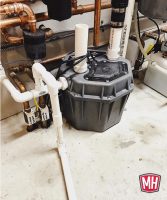
We do a lot of heating systems for second homes or lake cabins in remote areas. These houses have septic systems and minimum use all winter so having high efficiency condensing appliances introducing a trickle of flue gas condensate down the drain all winter can be a huge problem with dormant septic tanks and exterior Read more
 We do a lot of heating systems for second homes or lake cabins in remote areas. These houses have septic systems and minimum use all winter so having high efficiency condensing appliances introducing a trickle of flue gas condensate down the drain all winter can be a huge problem with dormant septic tanks and exterior main drain lines.
We do a lot of heating systems for second homes or lake cabins in remote areas. These houses have septic systems and minimum use all winter so having high efficiency condensing appliances introducing a trickle of flue gas condensate down the drain all winter can be a huge problem with dormant septic tanks and exterior main drain lines.
Typically we would run the gas boiler condensate drain directly to the floor drain and call it a day. In situations like this though that will almost always cause freezing at the septic tank inlet or in the main line from the house. This is due to the lack of use which isn’t introducing more bacteria, which would create heat.
 A few years ago I started installing the Liberty 404 sump station to combat this issue. This sump would typically be used to add a sink where immediate plumbing access isn’t available. We use it because it allows the system to run as normal but instead of a trickle down the drain all day, the sump fills with a couple gallons and discharges all at once so there’s no possibility of freezing in the tank or line. Simply using a condensate pump is not enough to stop the freezing in this situation, the larger volume from the sump is needed.
A few years ago I started installing the Liberty 404 sump station to combat this issue. This sump would typically be used to add a sink where immediate plumbing access isn’t available. We use it because it allows the system to run as normal but instead of a trickle down the drain all day, the sump fills with a couple gallons and discharges all at once so there’s no possibility of freezing in the tank or line. Simply using a condensate pump is not enough to stop the freezing in this situation, the larger volume from the sump is needed.
 I also pipe an overflow to the floor drain in case the pump fails when no one is around. Hope this helps and thank you for taking the time to read. If you’ve got questions or comments please add them below!
I also pipe an overflow to the floor drain in case the pump fails when no one is around. Hope this helps and thank you for taking the time to read. If you’ve got questions or comments please add them below!
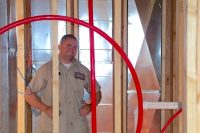
Mechanical Hub welcomes you to the very first installment of “They Said It” where we talk to contractors and get their viewpoints regarding the industry. This inaugural piece features some of the most innovative, progressive and successful contractors in the country as they weigh in on going into business on their own. Question: What advice Read more
Mechanical Hub welcomes you to the very first installment of “They Said It” where we talk to contractors and get their viewpoints regarding the industry. This inaugural piece features some of the most innovative, progressive and successful contractors in the country as they weigh in on going into business on their own.
Question: What advice would you give to those thinking about starting their own company?
 John Langan, Langan’s Plumbing & Heating, LLC—Howell, N.J.
John Langan, Langan’s Plumbing & Heating, LLC—Howell, N.J.
Langan’s Plumbing & Heating, LLC, was established in 1996 and has been servicing the local area for more than 20 years.
Stay in touch with customers. Communication is key! At first you may field calls yourself throughout the day. Eventually, you may have someone answer the phone or a reputable answering service.
Schedule … try not to overbook. Doing a job in our minds is way faster then actually doing the job. I can remember not accounting for things like travel time … supply house lines … and eating. Don’t forget to eat!
Public relations. Always be polite, and professional. Remember, the customer has a schedule also. It never hurts to give small tidbits of information as you go about the task of diagnosing. Do not be afraid to let someone know that you need a few minutes of uninterrupted thought. It may help to have an electronic device that clicks like a gas sniffer. Sometimes and audible prop will allow you the distance to collect your thoughts.
Follow up! Get over the fear of following up with quotes, even if a week or so goes by. Hey, it’s worth the call and you may be surprised as to why they have not gotten back to you regarding your estimate.
 Jim Godbout, Jim Godbout Plumbing & Heating Inc.—Biddeford, ME
Jim Godbout, Jim Godbout Plumbing & Heating Inc.—Biddeford, ME
Godbout has been running his successful business in the Northeast for the past 35 years.
Be open-minded and willing to listen and learn from everyone you encounter from customers, vendors and other contractors.
Take the time to educate yourself in business practices. The psychology of the human brain probably helped me the most dealing with employees and customers. Engage in your community (volunteer), developing long-lasting relationships with everyone. Educate your team and yourself on all the newest products and practices.
Find or develop the smartest, hard working people when hiring.
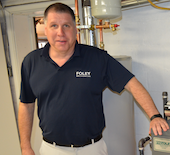 Dan Foley, Foley Mechanical—Lorton, Va.
Dan Foley, Foley Mechanical—Lorton, Va.
Dan started his company 2002 and he has become one of the preeminent HVAC contractors in the country.
Start early. I started my company at age 34 but wish I had done so five years earlier.
Make sure you are capitalized. My company was successful from the start but earnings were re-invested back into the company for growth. I was prepared financially to not take a paycheck for a minimum of one year to finance the growth of my company. Do not rely on banks, as it is unlikely they will write a note for a new small business. My bank said to come back in two years. My response: “I won’t need you in two years.”
Be persistent. Don’t quit. Show up on time. It seems like an oversimplification but I truly believe in this.
 John Abularrage, Advanced Radiant Design, Inc.—Stone Ridge, N.Y.
John Abularrage, Advanced Radiant Design, Inc.—Stone Ridge, N.Y.
John has been running his business since 1981. They custom-design fully integrated radiant and alternate-energy heating systems that deliver complete comfort, the highest efficiency and greatest reliability.
Running a business is a completely different skill set than the craftsmanship.
The most important thing in running a business is understanding people—employees, clients, yourself.
A long-term perspective of time is essential. It doesn’t matter where you are, but rather where you’re going. See the trends as they are happening.
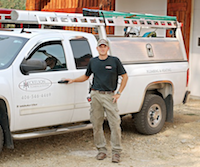 Andy Mickelson, Mickelson Plumbing & Heating—Missoula, Mont.
Andy Mickelson, Mickelson Plumbing & Heating—Missoula, Mont.
Since 2011, Andy has built a solid foundation for his business through hard work and perseverance. His performance on high-profile jobs have placed him at the top for customers seeking a knowledgeable contractor in the plumbing, hydronics and HVAC field.
To steal a phrase, entrepreneurial seizure is a common term used when thinking of the idea of starting your company. Most that do it think it’s a really good idea, but one needs to do his/her homework first. Go to the local SBA (Small Business Administration) chapters or visit the local community chamber of commerce to do some researching, and for a reality check. I took 8-9 months of planning before I left my previous job to start Mickelson Plumbing & Heating. Often times, when working for someone, one thinks they might have an idea of what it’s all about, but really has zero knowledge of running his/her own business.
Don’t lie to yourself; take the “I think we did well on that job” to “I know we did great.” This will give yourself a better understanding of what you might need to do on the next job. If you assume that you made money on the job and you didn’t, you will fall into the same mistake. We’ve heard it before, “performing the same thing over and over again expecting different outcomes is the definition of insanity.”
Set attainable goals, and do it often; once you reach that goal, blow past it. But don’t set a goal that is unattainable.
Jason Ridgeway, Ridgeway Home Services—West Chicago, Ill.
Ridgeway specializes in forced-air HVAC, radiant, geothermal and snowmelt systems and the latest HVAC technologies that provide comfort to his customers. He has been servicing the Chicagoland area since 2007.
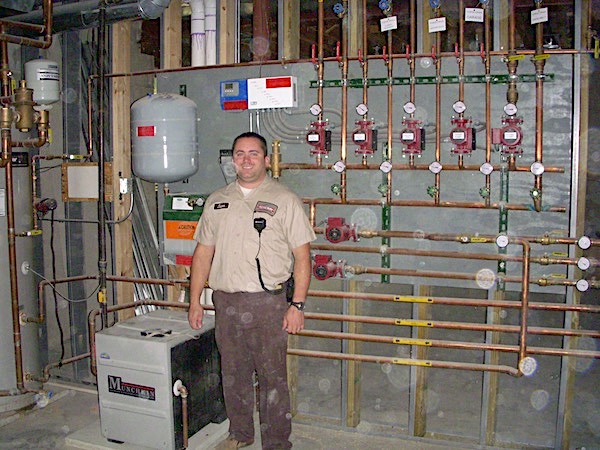
Don’t do it. It’s not worth it unless your one of the extremely lucky few who can handle and run a profitable business. It’s like a mirage in the desert; it looks like it will be an easy life where you sit at your desk or at home just counting money, telling others what to do. In reality, a service business can be life consuming, full of pitfalls—heartache, late nights and early mornings, with no sick days.
You wear all the hats, including full-time babysitter, accountant, businessman, front person, sales person and complaint box. Oh yeah, every now and then you get to count the money, but immediately after you get to dispense it, watch tens of thousands and some times hundreds of thousands of dollars instantly vaporize out the door—leaving you again under the gun to chase the next dollar.
But you get to make your own schedule and you don’t have someone telling you what to do. Well, except for the customer who expects you to answer the phone at any given time of day—one who demands that you come to their place for Christmas but not to eat. They want you to come see what that noise is they hear every now and then. You could send your guys and ruin their holiday or you could go and make everyone happy but your family.
While on vacation every one in the world seems to have an issue and they all have is your number. Do you toss your phone in the ocean or do you answer it? Will your business be there when you get back? Sorry honey, I have to cut this short by a day or two, there’s an issue I have to attend to. Have fun running that business on fumes while you fight to get pennies on the dollar.
Being the best service tech installer doesn’t by any means mean you will be a good businessperson. In fact, I think it’s the number one cause of failure. You will care too much. You will go the extra mile too often. You will say yes when it should be no. You will give too much of yourself for something that gives the slightest of chances of making it profitable.
That’s my 10 years worth of running a business advice. Don’t do it. Find a place that pays you what your worth; a place where someone else has to make the decisions; somewhere that when you’re done with work you actually get to go home and not have to think about work; a place that lets you have those vacation days. Find a place with good benefits and work there as long as you can.
Don’t get me wrong, there’s good to it but you have to step in piles upon piles of shit to get to it.
However, if you’re a strong headed go-getter entrepreneur and the greatest service/installer known to HVAC, and your going to be the guy who makes it:
Never, ever, ever, ever do new construction. No matter how profitable or big the number is. You will lose yourself and your company; it’s just a matter of time. There is no 40-year-old new construction company I know of.
Employees are not your friends. No matter how good you are to them, it’s business first and last.
Never count the money until after the jobs done and the bills are paid. Bills are not just materials and labor. This is a close runner-up for number one.
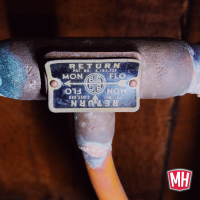
Hydronics 201: Last night I was called to a local farmstead for a no-heat in all of the bedrooms. Our typical Minnesota winter weather has finally returned so overnight temps are leveling out around -15F or lower so this was a priority call. This particular system was originally installed 60+ years ago and has Bell Read more
Hydronics 201:
Last night I was called to a local farmstead for a no-heat in all of the bedrooms. Our typical Minnesota winter weather has finally returned so overnight temps are leveling out around -15F or lower so this was a priority call.
This particular system was originally installed 60+ years ago and has Bell & Gossett Monoflo tees; a very innovative [for the time] invention by B&G that made one-pipe hot water heating systems possible.
Why would we want to heat with one pipe?
At the time steam systems were the norm for heating both large buildings and homes so the folks selling hot water equipment were up against a wall. After all, you won’t be very competitive trying to sell a heating system that requires two pipes if your competition can do it with just one so the one pipe diverter system was born.
Why was this significant at the time?
 While Bell & Gossett branded their diverter tees the “Monoflo” they were not the first or only company offering such a product. Taco had the “venturi” tee but the roots of this whole idea can be traced back to Oliver Schlemmer, a Cincinnati, Ohio heating engineer who designed and patented his O-S fitting in the early days of this century. Here’s what the O-S fitting looked like:
While Bell & Gossett branded their diverter tees the “Monoflo” they were not the first or only company offering such a product. Taco had the “venturi” tee but the roots of this whole idea can be traced back to Oliver Schlemmer, a Cincinnati, Ohio heating engineer who designed and patented his O-S fitting in the early days of this century. Here’s what the O-S fitting looked like:
The O-S fitting is probably not even in use here in Minnesota but it was first installed for gravity hot water systems. The Monoflo or Venturi tee came later, after the invention of wet rotor circulators.
The diverter tee system made installing hot water heating systems in new homes less labor intensive; eliminated the need for large diameter pipes found in gravity systems and was competitive with the alternative but often dangerous steam systems.
How does it work?
With a standard tee fitting water can enter or exit in any variable of ways. We all understand this, that’s why there is no “inlet” or “outlet”, its just a tee, what goes into it has to come out of it. Goesinta/goesoutta as its said.
 A diverter tee changes everything about the tee by creating a roadblock to divert flow thru one “goesoutta” in preference over the other. This allows a single pipe to operate as botht eh supply and return for the heating loop, thus lowering the installed cost of labor and materials. Although I was not around way back then nor do I personally know anyone alive today that was, I can imagine resistance in the labor force and promotion of this “new technology” by plumbing shop owners. ProPress comes to mind…
A diverter tee changes everything about the tee by creating a roadblock to divert flow thru one “goesoutta” in preference over the other. This allows a single pipe to operate as botht eh supply and return for the heating loop, thus lowering the installed cost of labor and materials. Although I was not around way back then nor do I personally know anyone alive today that was, I can imagine resistance in the labor force and promotion of this “new technology” by plumbing shop owners. ProPress comes to mind…


The following is shared directly from and article titled “Monoflo Know-How From B&G”
Removal of radiators
If removal of a radiator or baseboard is needed in a diverter tee system for remodel or relocation purposes do not cap the two pipes that led to the radiator. If you cap the pipes that used to lead to the radiators, all the water will go through the run of the diverter tee. That increases the system pressure drop and slows the flow rate to the entire system.
If you remove a radiator, remove the tees as well. If that is impractical, just connect the two branches with a short length of copper tubing. That way, the water that used to go to the radiator will still have a place to go.
If air is a problem on start-up, raise the static pressure until you’ve cleared it.
More air will dissolve in water that’s under pressure. If you’re having a hard time getting rid of air on start-up, try raising the static fill pressure. The higher pressure drives free air into solution and brings it down to your air separator. Once you get the system going, lower the static pressure again. This is important because if you continue to operate at higher pressure, your compression tank may not be large enough for the system. Your relief valve will pop.
Pitch the main and the radiators up in the direction of flow.
This advice goes back to the original installation books of the 1930s. The pitch makes it easier to get rid of air on start-up. Check those pipes. They may have sagged as the years went by, and that can give an installer fits. If you’re having problems, always check the pitch.
Use the right amount of tees.
Radiators above the main usually work with one tee, and that tee should be on the return side. Radiators below the main always need two tees, and those tees should be the width of the radiator apart.
And keep in mind these rules apply to convectors and freestanding cast-iron radiators. The folks who invented the Monoflo fittings never imagined you’d be running 50 feet of copper baseboard from two tees piped six inches apart. The long run of baseboard puts too much pressure drop along the branch. The water responds by taking the path of least resistance along the run. The result? A cold radiator. And it looks just like an air problem!
If you have long runs of baseboard, run them as a separate zone.
Put your circulator on the supply, pumping away from the compression tank.
When you pump away from the compression tank, the circulator adds its pressure to the system’s static fill pressure. That drives air bubbles into solution and makes it much easier for you get rid of the air that appears when you start the burner. Usually, you’ll find you won’t have to bleed the radiators when you pump away.
